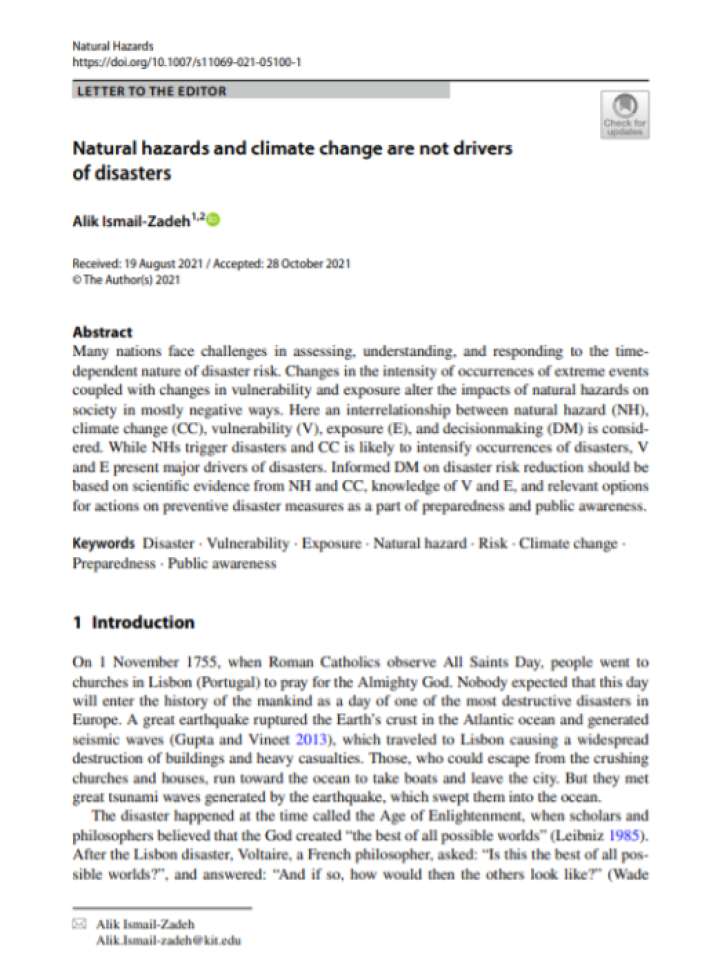Natural hazards and climate change are not drivers of disasters
This paper reexamines the interrelationship between natural hazard (NH), climate change (CC), vulnerability (V), exposure (E), and decisionmaking (DM). Changes in the intensity of occurrences of extreme events coupled with changes in vulnerability and exposure alter the impacts of natural hazards on society in mostly negative ways. While NHs trigger disasters and CC is likely to intensify occurrences of disasters, V and E present major drivers of disasters. Informed DM on disaster risk reduction should be based on scientific evidence from NH and CC, knowledge of V and E, and relevant options for actions on preventive disaster measures as a part of preparedness and public awareness.
This paper finds that the principal drivers of disasters are physical and social Vs and E, and not NHs and CC. NH events trigger disasters, and CC is likely to intensify their occurrences, but only where and when the disaster drivers are present. Science has always been at the forefront of research into complex problems related to NHs, CC, V, E, disasters, and associated risks, and scientists have always provided reliable information and compelling evidence of disaster risks to policymakers. However, the COVID-19 pandemic and other disasters associated with NHs showed again that states were not well prepared to tackle with the biological (SARS-CoV2 disease) and other NH extremes, despite the scientific knowledge about the NHs, associated risks, economic and financial consequences of disasters were available for decades. Disaster science should generate new knowledge in a co-designed and co-productive manner to be delivered to decisionmakers in the form of concise messages and various options for actions to be usable, useful, and used.
Explore further
